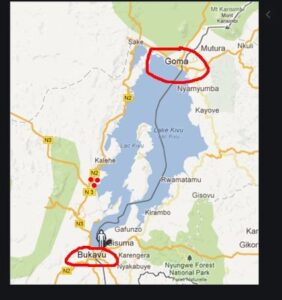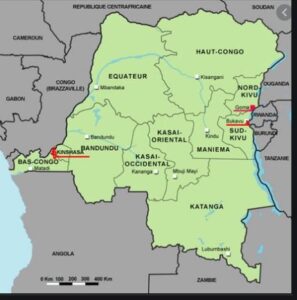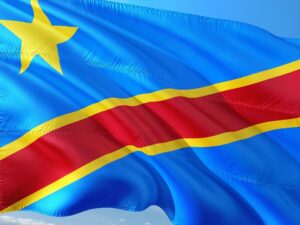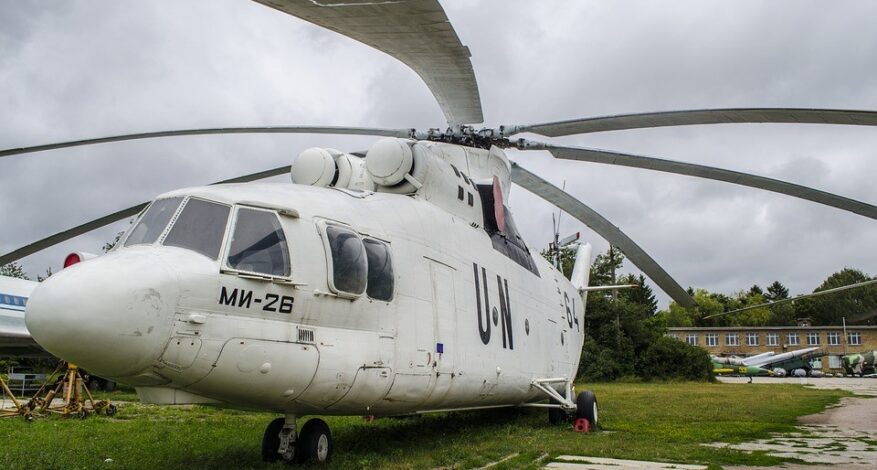THE SURROUNDINGS OF A DEATH
What happened
As many of us may have read over the last few weeks, on February 22nd, the Italian Ambassador in the Democratic Republic of Congo (DRC), Luca Attanasio, was killed together with a member of the Italian military force “Carabinieri”, Vittorio Iacovacci, and their driver. The identity of the killers has not been clarified yet; however, it seems that the murderers were not aiming at killing the three men, but rather at kidnapping them to ask for a huge ransom for their release. Reporters affirm that the kidnappers killed the men out of fear, as they heard someone was approaching. After the assassination of the Italian Ambassador, the DRC Interior Minister declared that the Rwanda Hutu rebels, the FDLR (Democratic Forces for the Liberation of Rwanda), were the authors of it. The group declared they were “not involved”. The fact that authorities and media cannot identify the authors of the murder proves once more that the area is largely out of control and that the local militias act as if they were the owners of the streets.
Where did this happen?
 The area where the assassinations took place is located near the border with Uganda and Rwanda, along the shores of Lake Kivu. This is still a highly insecure area. The ambassador was heading to Goma, a small city on the northern shores of the lake. In this part of Congo, there are still many conflicts and a civil war among the local groups that fight each other for the natural resources of the soil. Despite what the media have declared over the past week, local atrocities and violence generate from economic reasons in fact. Gruppo Missioni Imola Bukavu reported that the local fights are the result of economic divergent interests in the area. Foreign and external entities often finance the fighting groups. These entities include foreign governments and MNEs (Multinational Enterprises), which finance the local fighters in order to take control of the local natural and economic resources. In fact, the soil of this area of Congo is enormously rich in diamonds, gold, oil, methane, and uranium. These conflicts have recently moved towards Goma, the city where the ambassador was heading. In the 90s, instead, conflicts and violence were concentrated in the area of Bukavu, the capital city of the area, and they caused about 6 million casualties among civilians and members of the guerrilla groups.
The area where the assassinations took place is located near the border with Uganda and Rwanda, along the shores of Lake Kivu. This is still a highly insecure area. The ambassador was heading to Goma, a small city on the northern shores of the lake. In this part of Congo, there are still many conflicts and a civil war among the local groups that fight each other for the natural resources of the soil. Despite what the media have declared over the past week, local atrocities and violence generate from economic reasons in fact. Gruppo Missioni Imola Bukavu reported that the local fights are the result of economic divergent interests in the area. Foreign and external entities often finance the fighting groups. These entities include foreign governments and MNEs (Multinational Enterprises), which finance the local fighters in order to take control of the local natural and economic resources. In fact, the soil of this area of Congo is enormously rich in diamonds, gold, oil, methane, and uranium. These conflicts have recently moved towards Goma, the city where the ambassador was heading. In the 90s, instead, conflicts and violence were concentrated in the area of Bukavu, the capital city of the area, and they caused about 6 million casualties among civilians and members of the guerrilla groups.
Violence makes no news
 Attanasio and his group of people were, therefore, the victims of a situation that has been going on for a long time now, and that has often been misunderstood by the international community and media. All of which happens together with the silent but implicit agreement of local, corrupted authorities. The local population is the first victim of these conflicts. In fact, the resources extracted from the soil, together with the profit that derives from their extraction, is not redistributed, as the Congolese president Kabila opened his bank accounts in tax haven countries. This is not something we haven’t seen before. In 2002, after a volcanic eruption in Goma, which killed hundreds of people and left many more without a house, a BBC report affirmed that the local groups monitoring volcanic activities could not prevent the tragedy from happening. This was due both to the fact that they did not receive the requested permissions and economic finances to do the necessary job, and to the theft or destruction of their monitoring machines they had spread around the area by the local guerrilla groups, which re-assembled them for their needs. Africa News reports that, in 2011, episodes such as the one that happened to Sharifa Kamana were quite common in Goma. Her husband was shot dead at night, near their house. Ten years after this incident, nobody has opened any investigation yet. Sharifa is a widow that does not seem to have the right to an answer about her husband’s death.
Attanasio and his group of people were, therefore, the victims of a situation that has been going on for a long time now, and that has often been misunderstood by the international community and media. All of which happens together with the silent but implicit agreement of local, corrupted authorities. The local population is the first victim of these conflicts. In fact, the resources extracted from the soil, together with the profit that derives from their extraction, is not redistributed, as the Congolese president Kabila opened his bank accounts in tax haven countries. This is not something we haven’t seen before. In 2002, after a volcanic eruption in Goma, which killed hundreds of people and left many more without a house, a BBC report affirmed that the local groups monitoring volcanic activities could not prevent the tragedy from happening. This was due both to the fact that they did not receive the requested permissions and economic finances to do the necessary job, and to the theft or destruction of their monitoring machines they had spread around the area by the local guerrilla groups, which re-assembled them for their needs. Africa News reports that, in 2011, episodes such as the one that happened to Sharifa Kamana were quite common in Goma. Her husband was shot dead at night, near their house. Ten years after this incident, nobody has opened any investigation yet. Sharifa is a widow that does not seem to have the right to an answer about her husband’s death.
Hope lays in international cooperation
 The conditions this population lives in have been slightly improving over the last 20 years, thanks to humanitarian actions and missions by small associations like one of our local partners, and by the UN. Their peacekeeping forces, in fact, the MONUSCO mission, are active in the area and were the first ones to intervene to save the lives of Attanasio, Iacovacci, and his driver. They were trying to reach a World Food Program school feeding project directed by FAO. This is further proof of the fact that despite harsh criticism now, and despite the clearly difficult situation, humanitarian actions in the area are active and present, trying to improve the situation as much as possible. Diego Zorrilla, the UN Deputy Humanitarian Coordinator in DRC, said the NGOs will strengthen their collaboration with the government, to improve the security in the area. Zorrilla said the attack was a “reminder of the difficult working conditions of the humanitarian workers” and of the insecurity that still prevails in North Kivu and other areas.
The conditions this population lives in have been slightly improving over the last 20 years, thanks to humanitarian actions and missions by small associations like one of our local partners, and by the UN. Their peacekeeping forces, in fact, the MONUSCO mission, are active in the area and were the first ones to intervene to save the lives of Attanasio, Iacovacci, and his driver. They were trying to reach a World Food Program school feeding project directed by FAO. This is further proof of the fact that despite harsh criticism now, and despite the clearly difficult situation, humanitarian actions in the area are active and present, trying to improve the situation as much as possible. Diego Zorrilla, the UN Deputy Humanitarian Coordinator in DRC, said the NGOs will strengthen their collaboration with the government, to improve the security in the area. Zorrilla said the attack was a “reminder of the difficult working conditions of the humanitarian workers” and of the insecurity that still prevails in North Kivu and other areas.
This close and constant collaboration among the local population, NGOs, humanitarian missions, and the international community seems to be the only hope for the population itself. This is why it is important that their work continues despite this. According to what local people said, Luca Attanasio was a very compassionate and active person in the area. He visited the communities scattered around the city multiple times, spending time in local missions run by volunteers, and he was a great supporter of the local programs of the UN. Therefore, we must hope and believes that his life did not brutally end in vain. Hopefully, what happened will bring the actual and deep roots of the issues and violence in the area to the attention of the international community. In fact, if the local population received the shared and international help they need, it would only benefit from it enormously.

